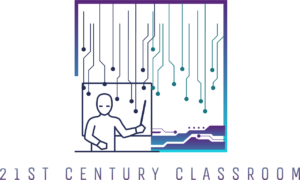
Communicating with Purpose: Navigating the Corporate World with Authenticity
Collaboration is more than just a buzzword in the corporate world. It’s a critical ingredient for achieving success, especially in today’s fast-paced and ever-changing environment. We all know what good collaboration looks like, but why is it so challenging to put into practice? According to Harvard Business Review, 75% of cross-functional teams are dysfunctional. That’s a significant gap between saying we need to collaborate and actually making it happen.
The truth is, times have changed, and teamwork looks different now than it did before. In our pursuit of innovation and the next big idea, we need to bring together the right expertise at the right time, and often that talent is dispersed across multiple locations and time zones. The dynamics are more complex, and although technology can connect us, it can’t replace the importance of building authentic relationships.
Moreover, our workloads seem to be ever-growing, and those team-building activities appear as a luxury when we’re under the pressure of deadlines. However, research shows that how a team works together has more of an impact on its success than what they’re working on. We need to shift our focus from the content to the process.
So, how do we make collaboration happen in practice? There’s no one-size-fits-all approach. Each team is unique and requires a bespoke response. Creativity is messy and chaotic, and unique challenges demand unique solutions. Instead of relying on a step-by-step process, we need to develop our awareness of how to make collaboration happen.
At the core of authentic collaboration lies the ability to leave our egos at the door. The seed of an idea can come from anywhere, regardless of someone’s job title or level. We need to cultivate the humility to acknowledge that and the vulnerability to say, “I don’t know” and the curiosity to ask open-ended exploratory questions that will lead us to the answers. We also need to listen deeply to people and have empathy to understand different perspectives. Soft skills like self-awareness and emotional intelligence are critical to building authentic relationships.
Another key aspect of authentic collaboration is embracing conflict. Real collaboration creates fires in our bellies and ignites passionate, respectful debate. It’s intense, resonant, and energetic. Creating something new means making ourselves uncomfortable, but in a great team, it feels safe to challenge our peers, take risks, and make mistakes. Psychological safety, a concept identified by Amy Edmondson, is the most crucial factor in high-performing teams.
Takeaway
In today’s fast-paced corporate world, the importance of authentic communication cannot be overstated. It is not enough to merely understand the buzzwords and concepts of collaboration and teamwork. Instead, we must go beyond them and truly internalize their essence, so that we can create an environment where everyone can bring their best selves to the table.
True collaboration requires us to leave our egos at the door and embrace conflict, knowing that it is through challenging our peers and ourselves that we can truly innovate and create something new. It also requires us to build our “soft skills” such as self-awareness and emotional intelligence, so that we can truly understand and empathize with our colleagues and work together towards a common goal.
The process of building a collaborative team is not easy or quick, but it is well worth the effort. It takes hard work, patience, and a willingness to learn and grow. By doing so, we can create an environment where everyone is empowered to contribute their unique perspectives and talents, and where we can achieve more together than we ever could alone.
So let us continue to push beyond the buzzwords and embrace the true essence of authentic communication in the corporate world. Let us create a culture where everyone can thrive, where ideas are challenged and debated, and where collaboration is not just a buzzword, but a way of life.

